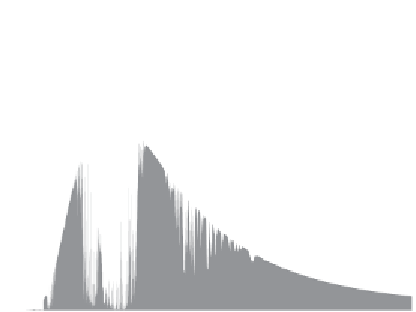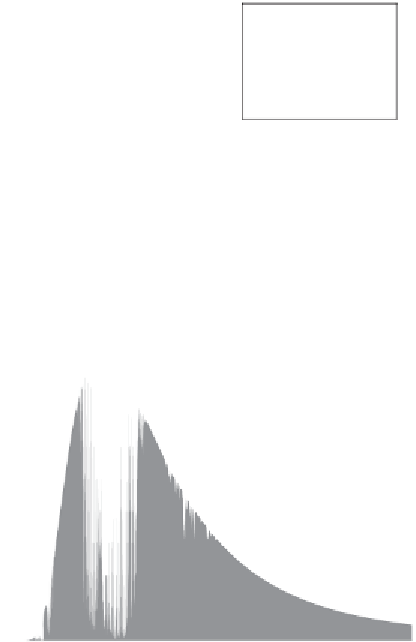Geoscience Reference
In-Depth Information
(a)
30
30
25
25
20
15
20
10
5
0
15
020406080 100
10
5
0
0
5
10
15
20
25
30
35
40
Wavelength (µm)
(b)
30
30
25
25
20
15
20
10
5
0
15
020406080 100
10
5
0
5
0
10
15
20
25
30
35
40
Wavelength (µm)
Figure 2.13
Downwelling longwave radiation for a typical mid-latitude winter atmo-
sphere (
a
) and summer atmosphere (
b
). The dashed line is the Planck curve for 273
and 294 K, respectively. The inset shows the full spectral range of longwave radia-
tion. Data computed with the Reference Forward Model (
http://www.atm.ox.ac.uk/
RFM/
, based on GENLN2) (Edwards,
1992
), using the HITRAN2008 absorption
line database (Rothman et al.,
2009
).
range between approximately 8 and 13 μm, the so-called 'atmospheric window'. The
absence of absorption lines in the atmospheric window implies that the atmosphere
(without clouds) neither emits nor absorbs radiation in this wavelength range.
Fig-
ure 2.12a
depicts downward emission of longwave radiation from a cloudless atmo-
sphere. For that case, incoming longwave radiation consists only of radiation in the
wavelength ranges 3-8 and 13-100 μm, denoted by
L
0
.
Figure 2.13
illustrates the spectral composition of downwelling longwave radia-
tion for mid-latitude conditions during winter and summer. The irst thing to note is












































































































































































































































Search WWH ::

Custom Search